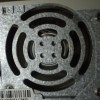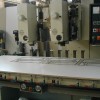Automation
I have a project to do for college and I am having some trouble coming up with ideas. I would appreciate if some of you fellow hubbers can help me find some ideas.
I am studying electron and computer engineering. I am looking for a brand new idea or an improvement on already established ideas. It could be something that automates something we would normally have to do manually.
eg We already invented a light and a light switch, but an improvement can be a light that automatically turn on when you enter a room, and also maintains constant lighting in that room despite the time of day and shadows (another students idea).an airconditioning system that turns on automatically whenever it detects motion within a room, it should also automatically adjust the temperature inside the room..
is this a new idea?Air conditioning takes a long time to reduce the temperature. Also, the compressor uses a lot of instantaneous current when it switches on. You may not be saving much energy with a lot of on/off cycling, and certainly put more wear and tear on the compressor.
Also, the motion sensing you propose would result in the A/C switching off if you just sat or lay there motionless after a certain amount of time
Motion sensing isn't a new concept, obviously. It could probably be utilized more often. Seems to me Bill Gates built motion sensing lighting into all the rooms in his mansion. Some office buildings also have ambient light sensors that shut off overhead lighting when there's enough natural light.
Something that could save energy, is an energy sensing timer built into any electrical device that doesn't need to be on all the time. The device would power itself down after..say, 30 minutes of inactivity.
Then there's the collective energy used by all those devices that use a small amount of standby power to respond to remote control commands.
You could either run the standby power from rechargable batteries, or create an energy-sensing power bar that would cut the power to all the connected devices when it senses that all of them are off. The power bar sensor could also be powered from rechargable batteries, and respond to the 'on' command from any remote control..thus powering up the standby on all the devices.
There's some free ideas for ya...run with it.
[btw...I'll be expecting regular royalty cheques any time now, huh?]
Most of the larger buildings I work on have lighting and HVAC controlled by occupancy sensors now. They also take time of day into account, and many have lighting that automatically dims based on how much sunlight is coming into the room.
In my area building codes require lighting based on occupancy for nearly all commercial buildings, and it is an easy step to add the HVAC controls to that.I own a manufacturing company and I am an electrical engineer and tool maker. You can automate tools routers anything easily.
If you are looking for something in a house, how about a zonal climate control system.
You could have something that is programmed to heat or cool certain rooms at certain times or when people are inside these rooms. One example would be if people are sleeping, the room would be warm where as the rest of the house would be at a lower temperature.
This can be done with servo actuated registers which would basically open part way and allow more or less of the warm air to flow from the ducting that is carrying warm air. This could be done with a computer interfaced to distributive systems and plcs. A small motion control program would be needed to control the opening of the servos. Inputs would be thermostats as well as sensors and the computer's program.




